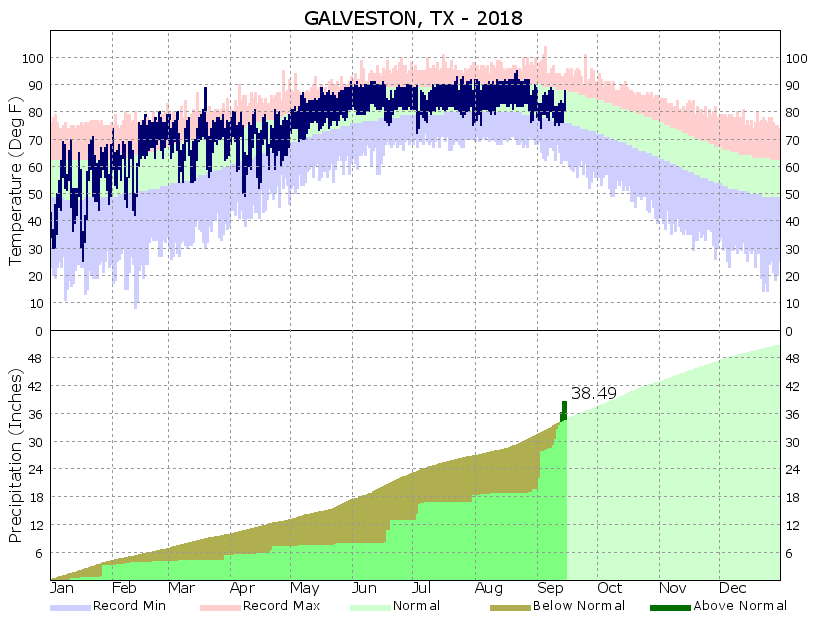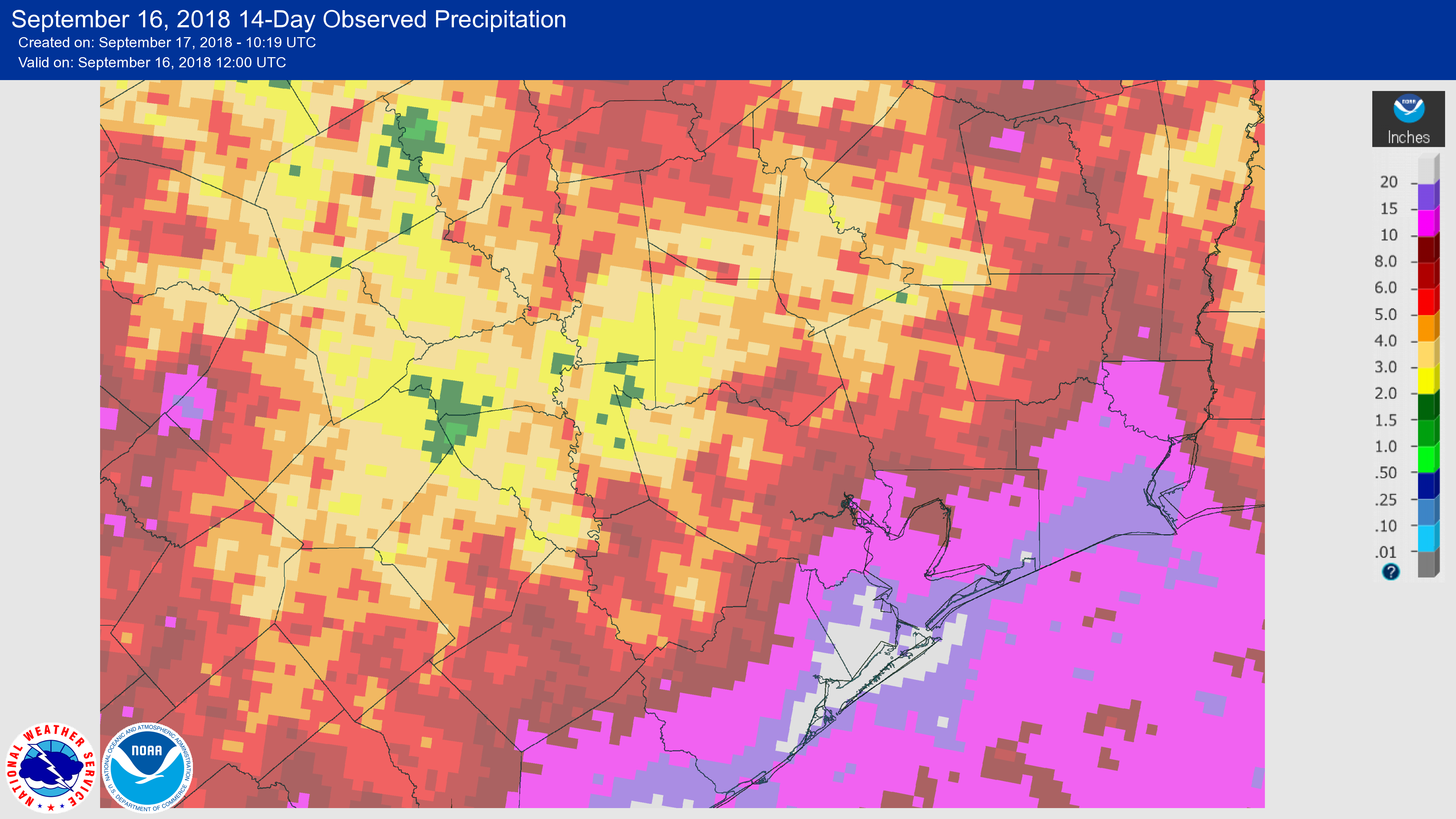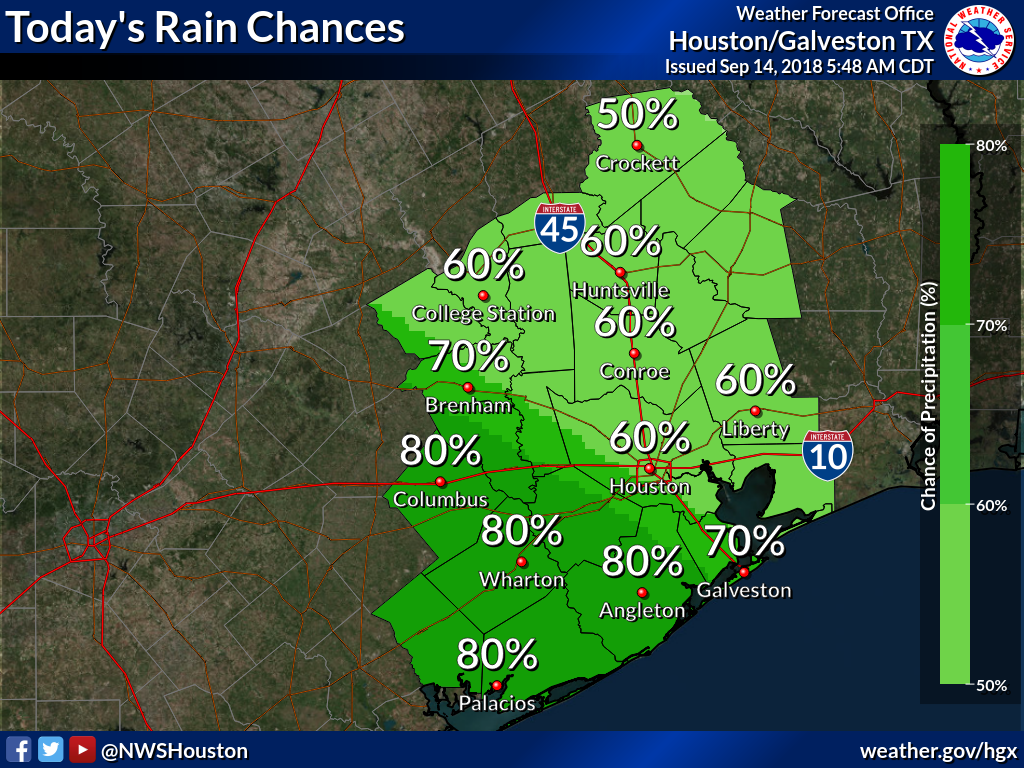We think next weekend at the end of the month probably looks fairly nice, if that front we mentioned in Tuesday’s post comes to pass. Unfortunately, this immediate weekend doesn’t look great. And by not great, we mean a healthy chance of rain showers with the possibility of locally heavy rainfall.
Houston has generally been dry since Saturday, with partly to mostly sunny skies this week for much of the area. This has been due to high pressure overhead, which has kept some of the Gulf of Mexico moisture at bay, and prevented it from rising into the atmosphere, condensing, forming clouds and—you guessed it—producing rain showers. After today, however, this high pressure will begin sliding to the east.

The net effect of this will be to increase moisture levels to above normals, essentially opening up an atmospheric river streaming in from the Gulf of Mexico into the Texas coast. This, combined with some anticipated disturbances in the upper-atmosphere, will once again allow for the development of rain showers.
We don’t have a signal for anything too extreme right now, but rainfall should be widespread enough, and perhaps intermittently heavy, to put a damper on outdoor activities during the Friday through Sunday period.

Wednesday
Before the rain chances increase, we’re going to see another warm and mostly sunny day. I don’t think we’ll quite reach the 97 degrees we saw on Tuesday, but a lot of the region probably will get into the mid-90s.




